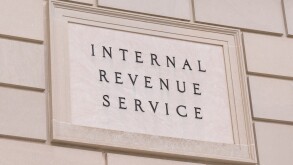
|

|
Khoonming Ho |
Lewis Lu |
On December 31 2012, the Ministry of Finance (MoF) and the State Administration of Taxation (SAT) jointly issued Circular Caishui [2012] 84 (Circular 84) setting out the substantive framework under which head offices and branches are eligible to group for VAT purposes. Presently separate legal entities, including wholly-owned subsidiaries, are not permitted to group with the head company for VAT purposes. Circular 84 only effectively applies to taxpayers in industries subject to the VAT pilot programme. It does not apply to VAT taxpayers engaged in traditional VAT activities (that is the sale or importation of goods, processing, repair and replacement services).
Circular 84 provides that the head office of a taxpayer calculates the VAT payable both in respect of itself, and its branches, on a grouped basis. The VAT on a grouped basis is paid by the head office to the SAT at the location (the city or province) where the head office is situated. Qualified taxpayers shall follow the steps below to calculate its VAT payable in certain filing period:
Step 1: Calculation of grouped sales revenue
Circular 84 provides that the grouped sales revenue of a head office is the sum of:
The sales revenue of the head office and its branches located in the pilot areas from business activities which are subject to the VAT pilot programme.
The sales revenue of branches which are located in non-pilot areas derived from business activities which are in the scope of the VAT pilot programme. There is a slight variation in the calculation of the sales revenue of branches in non-pilot areas, such that the following formula applies:
Sales revenue = turnover of taxable services ÷ (1 + applicable VAT rate)
Step 2: Calculation of grouped input VAT
The grouped input VAT is simply the sum of the input VAT of the head office and the branches in pilot locations in respect of services which are subject to the VAT pilot programme. Any input VAT referable to branches in non-pilot locations cannot be taken into account on the basis that such amounts are not creditable at the branch level.
Step 3: Calculation of VAT payable
Grouped VAT payable = grouped sales revenue × applicable VAT rate - grouped input VAT - VAT payable by branches in pilot locations - business tax paid by branches in non-pilot locations
VAT payable by branches in pilot locations = sales revenue of the branches × advance tax rate
Advance tax rate is a rate which is prescribed and adjusted from time to time by the MoF and the SAT. Circular 84 is presently silent on methodology used by the MoF and the SAT to determine the advance tax rate for each branch.
At present, the specific implementation rules under the framework set out in Circular 84 will be operational at an administrative level are yet to be introduced (except in respect of the airline industry). In practice, this framework is only available to selected state owned enterprises whose VAT revenue goes directly to the central government. However, with the release of the framework rules contained in Circular 84, businesses subject to the VAT pilot programme can start to consider whether they will choose to group for VAT purposes, and if so, how grouping will affect them.
Khoonming Ho (khoonming.ho@kpmg.com)
Tel: +86 (10) 8508 7082
Lewis Lu (lewis.lu@kpmg.com)
Tel: +86 (21) 2212 3421
KPMG
Website: www.kpmg.com









